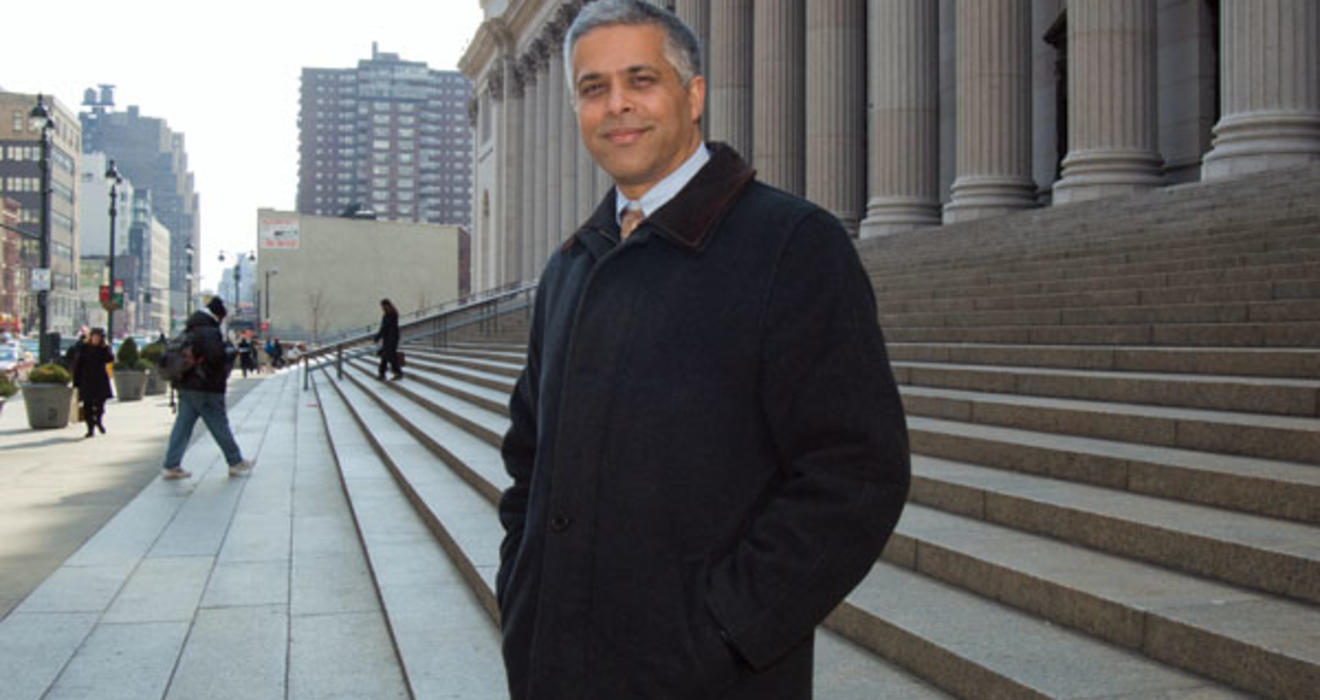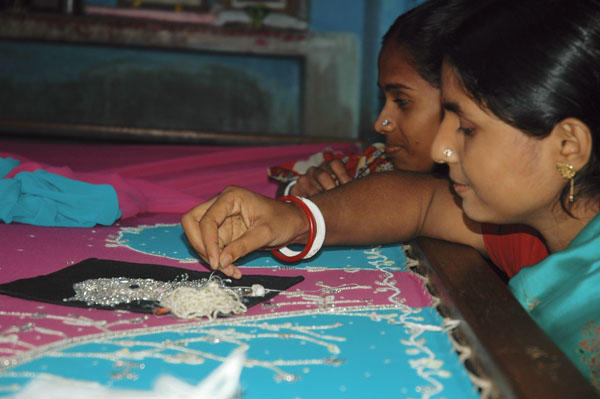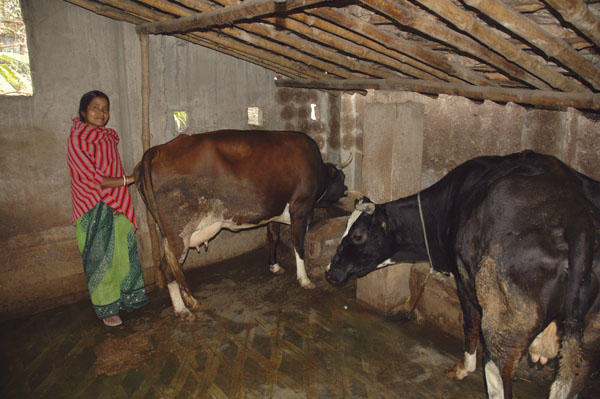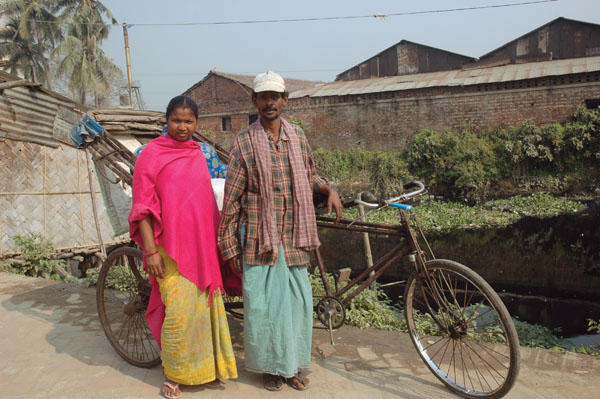
Arka Mukherjee *95 may be the only entrepreneur in the high-tech world of data integration who holds a Princeton Ph.D. in chemistry, and he has an eclectic range of interests that spans from computers to wildlife conservation.
But according to friend and colleague Arabinda Sinha, Mukherjee’s most exceptional trait is his generosity. “He’s the only graduate student I’ve known who was supporting students back home with money from his stipend,” says Sinha, a retired professor from Robert Wood Johnson Medical School.
During his time at Princeton, Mukherjee managed to save enough money to fund three small scholarships for students in his hometown of Darjeeling, India. Sinha, who had met Mukherjee through mutual friends, served on an ad hoc committee that chose the recipients. A decade later, when Sinha wanted to create a nonprofit microfinance bank in West Bengal to provide small loans to poor women, one of his first calls was to Mukherjee, whose uncommon gifts had made a lasting impression.
The idea of assisting India’s poor appealed to Mukherjee’s philanthropic interests, which he says were inspired by the Gandhian ideals he learned as a child and reinforced by Princeton’s commitment to service. Mukherjee also values innovative ways to solve problems — it’s the basis of his company, Global IDs, which helps businesses coordinate information stored in a variety of computer systems. From everything he had read and heard, microfinance was an innovative way to address poverty in the developing world.
Mukherjee, who lives in Princeton, agreed to provide the bulk of the initial investment, and he joined with Sinha and a few others, including Sinha’s son-in-law, Shridar Ganesan ’85, to found the bank, named Sarala in honor of Sinha’s grandmother. Since its launch in July 2006, the bank has built its roster of borrowers to 10,000 and aims to have 50,000 clients by September 2008.
The term “microfinance” refers to banking operations that reach out to some of the world’s poorest communities, which often are underserved by traditional banks. By offering small loans — usually of about $150 — and other services like savings accounts, microfinance institutions help poor clients to even out disruptive fluctuations of income and make capital investments for small businesses. Sarala clients, for example, have bought cycle rickshaws, cows, and embroidery supplies — modest purchases that, combined with hard work, can generate a significant boost in income.
Sarala gives loans only to women. That’s not unusual, says Gretel Guzman *04, an independent microfinance consultant who once worked for Women’s World Banking, because women are among the most vulnerable of the world’s poor, with few assets, tentative employment, and few options to open commercial bank accounts. “Poor women around the world have that commonality,” Guzman says. “They’re often not taken seriously as clients.”
Women who receive microloans can build financial stability and, in some cases, increase their stature in their own households, says Mukherjee, who points to one Sarala client who used her loan to buy a cycle rickshaw. The woman is not the rickshaw’s driver — that job belongs to her husband, who was unable to get credit. By taking out a loan and managing the finances of the small family business, the woman has become her husband’s boss, a rarity in patriarchal India.
Sarala clients pay an interest rate of about 20 percent — which would make traditional borrowers howl, but is relatively low in the world of microfinance. First, much of the money that Sarala lends comes from a loan that the bank has taken out in order to reach more clients, so Sarala must cover the interest on its own loan. Second, some of the microloan interest acts as an infusion to promote growth, so that Sarala can make more loans in the future. And third, the interest covers the costs of servicing the loans, which is labor intensive — a reality that has discouraged most commercial banks from reaching out to poor, rural clients. Sarala’s branch managers and loan agents meet with clients in person once a week, in groups of about 20, to collect payments, listen to concerns, and offer support.
When a client is unable to make her payment in a given week, other group members assist. The women also find practical tips about running a business. “What the group essentially does is it tells people that, yes, you might not have all the information to do this by yourself, but we as a group collectively have enough information to put you on your feet,” Mukherjee says.
Decades of microfinance data have shown that poor women are extraordinary clients, and Sarala is no exception, with a loan-repayment rate between 98 and 99 percent. Receiving a loan is a powerful vote of confidence, Mukherjee explains. The women not only feel obligated to make their payments — they’re proud to do it.
Mukherjee, who travels to India for business at least four times a year, checks in with a few of Sarala’s branch operations during each visit. Sinha serves as Sarala’s CEO, managing the bank from his home in New Jersey and communicating via an Internet phone service with the branch managers and loan officers who drive day-to-day operations in West Bengal.
Awareness of microfinance — and the number of microfinance banks — has grown dramatically in the last three years, due in part to media coverage of microfinance pioneer and 2006 Nobel Peace Prize winner Muhammad Yunus, increased involvement from the Bill & Melinda Gates Foundation, the spotlight provided by the U.N.’s 2005 “International Year of Microcredit,” and the more recent phenomenon of Kiva.org, a Web site that allows individuals to fund microloans to specific entrepreneurs around the world. Among alumni involved in the movement, David S. Gibbons *68 is chairman of Cashpor Micro Credit, one of India’s largest microfinance institutions, while Jennifer Isern *92 is the lead microfinance analyst for the Consultative Group to Assist the Poor (CGAP), a consortium of 33 public and private development agencies supported by the World Bank.
Isern first delved into microfinance while working for CARE in Niger in the early 1990s; she was asked to start a community finance bank at a time when there were few examples in West Africa. The pilot program she helped to create is still going strong nearly 18 years later, serving more than 700,000 clients. Since joining CGAP in 1996, Isern has worked in more than 50 countries, assisting projects and promoting more effective microfinance operations. CGAP estimates that worldwide, nearly 1 billion people still lack access to basic financial services, and Isern expects new and existing microfinance institutions to continue to build their capacity to reach those potential clients. She also sees a trend toward consolidation, in which larger banks may bring smaller operations under their umbrellas to take advantage of economies of scale.
The increasing attention to microfinance is positive, Isern says, “but there is a double edge.” While microloans grab the spotlight, she says, they are only one piece of what’s needed to reduce poverty: Education, health care, and other development programs cannot be forgotten.
Mukherjee agrees. Each time he speaks with Sarala’s clients, the women say they are grateful for the opportunities that their loans have provided. They ask for larger loans so they can do more (a dilemma for banks, which must choose between lending more to a few or expanding their reach — so far, Sarala has chosen the latter). And the women also want to know what Sarala can do to help with education and health care.
Though some microfinance banks have tried to address education by making loans to small schools, and a few have partnered with insurance companies to offer insurance plans, so far, Mukherjee and his colleagues are sticking to what they know. “If you diversify into these areas [such as education and health care], you will not be able to achieve your core mission,” he says.
For Sarala, growth is the next priority. Reaching 10,000 clients might seem like a remarkable achievement for an organization with limited resources and a half-dozen founders, but in West Bengal, more than 3 million women still do not have access to credit. Mukherjee is eager to extend Sarala’s reach.
There’s a good chance more alumni will follow him into the field. A handful of recent graduates already have gone to work for microfinance banks or related organizations aimed at poverty reduction. Microfinance has been a popular topic for undergraduate independent work, and it’s part of a required economics course for Woodrow Wilson School graduate students who concentrate in development studies, according to Karen McGuinness *85, an assistant dean at the Wilson School. McGuinness has advised five senior theses on microfinance in the last five years and taught a graduate workshop on the subject. “It’s an issue that appeals to the right and to the left,” she says, “because it’s pro-poor, but it’s about the poor helping themselves.”









1 Response
John W. Scott ’56
9 Years AgoPromoting microfinance
I commend you for your article featuring Arka Mukherjee *95 and his microfinance venture (feature, April 2). Microfinance has been the darling of development economists for the past few years, and it well deserves the increasing recognition. I suspect that you might come across more Prince-tonians who have been involved in this movement in one way or another. I have been on the board of ACCIÓN International since 1985, when the initiative was still in its infancy. Now ACCIÓN’s affiliates in Latin America, Africa, India, China, and indeed, the United States have a portfolio of over $3 billion and some 3.5 million clients (see ACCION.org on the Web). Historically, the payback ratio exceeds 97 percent. Two-thirds of the borrowers are women.
Of course, as Mr. Mukherjee says, that is still a small fraction of the potential, which is why we feel that the microfinance institutions benefit by becoming regulated banks so they can take deposits and tap into financial markets. The need far exceeds the capacity of philanthropy alone, and, efficiently run, these institutions can be profitable enough to capitalize the necessary expansion. There are, in fact, many institutions now in this field, not the least of which is Grameen Bank, serving millions in Bangladesh alone, as well as Bank Rakyat Indonesia, serving millions in that country.